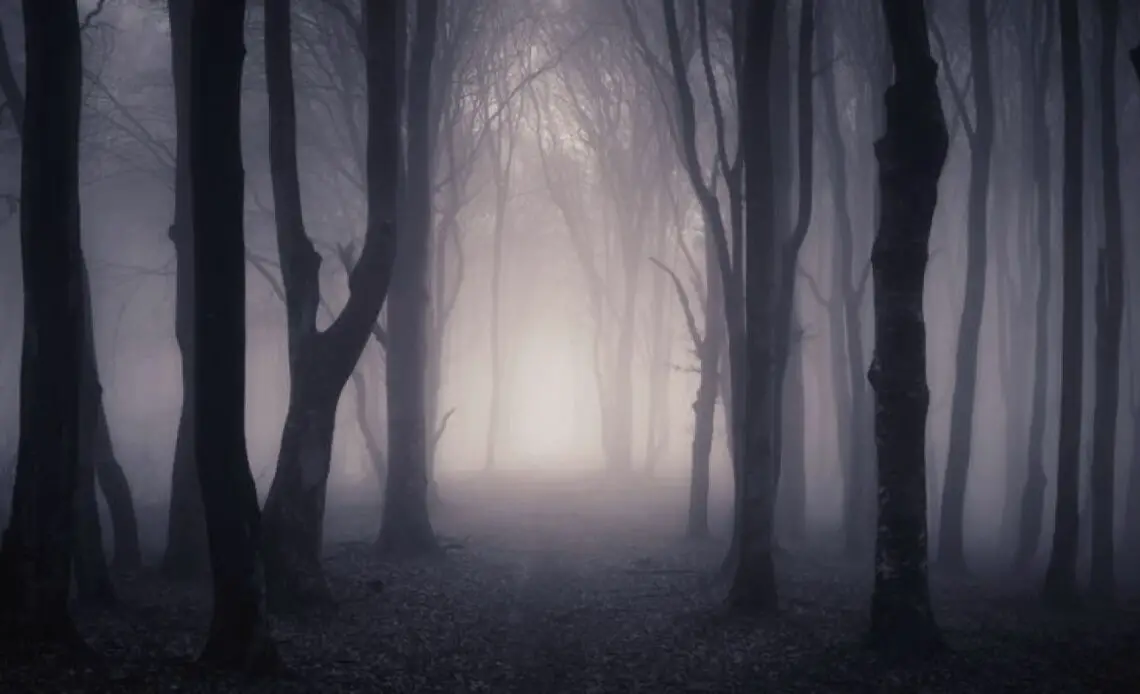
We find peace in sleep after an exhausting day— seeking refuge from our raucous world. But when an unknown creature suddenly attacks you or the thing you feared the most happens— sleep becomes an extension of our agonies.
Nightmares have been feared by mankind ever since the dawn of time. Invading our peaceful sleep, leaving marks of dread and horror.
It may seem that you’re helpless against your nightmares, but as the old saying says, You must know your enemy well to conquer it.
What are Nightmares?
According to Stanford Health Care, Nightmares are vivid dreams that contain frightening images that leave negative feelings of terror, fear, and extreme anxiety to the sleeper.
The nightmare can cause the sufferer to wake up in severe distress, resulting in an elevated heart rate and perspiration. Often, it takes time for the sufferer to recover from the negative emotions caused by nightmares, and they may have difficulty going back to sleep.
The History of Nightmares
The Columbia Journalism Review wrote in an article that it was around 1300 when the word ‘nightmare’ was first used.
According to the Oxford English Dictionary, the term ‘nightmare’ translates to a female spirit or monster who settles on a sleeping person or animal, causing them to feel suffocated.
Since we have most nightmares at night and perceive that death and other evil spirits haunt the darkness, ‘night; was paired with ‘mare.’ And nightmares soon came to pertain to any bad dream, whether accompanied by feelings of suffocation or not.
In the past, people try to interpret nightmares and develop conclusions through the details they get. Nightmares were once perceived as bad omens and representations of a person’s guilt because of their sins.
Related: 14 Best Dream Books to Decode Your Dreams
Nightmares in Different Cultures
Different creatures and stories make up the unique concept of nightmares across cultures. Each one gives different meanings to these dreams and how they affect their lives.
Scandinavia
In Scandinavian Culture, the mare was featured in Ynglinga Saga, a 13th-century Old Norse saga. It was written in the saga that Swedish king Vanlandi was murdered by a mare conjured by a Finnish sorceress after the king left his wife.
Shortly after falling asleep, Vanlandi says that a ‘nightmare rode him.’ He said it nearly broke his legs and then pressed down on his head, killing him.
Germany
In German fables, there are plenty of creatures said to disturb peaceful sleep. The mare, alp, mart, and trud were said to be evil nocturnal spirits associated with nightmares.
Japan
In Japanese folklore, the Baku is said to be a mythological being that devours nightmares. The Baku should be summoned with caution because if it’s not satisfied with the nightmares he devoured, it might also devour one’s dreams and hope.
The Philippines
The Batibat or Bangungot is a vengeful spirit found in Ilconano folklore. These evil spirits are said to cause the fatal nocturnal disease called ‘bangungot’ or Sudden Unexplained Nocturnal Death Syndrome (SUNDS).
The Batibat takes the form of a huge, old, fat woman that resides in trees. When their dwellings are cut down to make posts for homes, the homeowners might find that they have brought in a Batibat.
The Batibat gets particularly cranky when someone dares to sleep near their homes. They will transform and settle on their victim’s chest until they suffocate.
India
In Bengali culture, a creature called Boba is said to attack people in their sleep. The Boba is an evil spirit that attacks people who sleep on their backs. It strangles its victims to death and is believed to be a supernatural cause of sleep paralysis.
Why do We Have Nightmares?
According to the Mayo Clinic, nightmares are referred to by doctors as a parasomnia— a type of sleep disorder involving undesirable experiences that occur while sleeping, during sleep, or when waking up. Nightmares usually occur during rapid eye movement (REM) sleep.
Until now, the exact cause of nightmares is not known. But according to experts, nightmares can be triggered by the following factors:
Anxiety or Stress
The ordinary stresses of daily life can trigger nightmares. Major changes such as the death of loved ones or moving out can have the same effects. Experiencing anxiety can lead to a greater risk of nightmares.
Trauma
Nightmares are common after an injury, accident, or any bad experiences and traumatic events. Nightmares are common in people who have post-traumatic stress disorder (PTSD).
Sleep Deprivation
Irregular sleeping schedules and lack of quality sleep can increase the possibility of having nightmares. People who have insomnia face a greater risk of experiencing nightmares.
Medications
Some drugs, such as those used to treat Parkinson’s disease, antidepressants, beta-blockers, and blood pressure medications, can trigger nightmares.
Substance Misuse
Recreational drug and alcohol abuse can trigger nightmares.
Other disorders
Other mental health disorders may be associated with nightmares. Nightmares may occur along with some medical conditions, such as cancer or heart disease.
Scary movies and books
For some people watching horror films and reading scary books, especially before bed, can trigger nightmares.
The Risk of Having Nightmares
According to Tore Nielsen, director of Dream and Nightmare Laboratory, nightmares are common and just our typical bad-dream scenarios. They are fairly common and natural but come in different shapes and sizes.
Each person has their perception and level of sensitivity to nightmares. Sometimes, a nightmare’s events and settings may be innocent, but the dreamer may develop emotions of disgust, distress, and terror. And if nightmares are distressing and frequent, they can cause real health issues.
Nightmares can lead to emotionally disturbing emotions that may affect a person’s personal and professional life. They can make a person experience accelerated heart rate, sweating, and rapid breathing. Worse, it can lead to insomnia, maladaptive daydreaming, lucid nightmares, or nightmare disorder.
Lucid Nightmares
An article by Psychology Today discussed that in lucid nightmares, the dreamer is conscious that they are dreaming and that the dream is a nightmare. The nightmare themes involve demonic entities and terrifying creatures who inflict terrible harm on the dreamer who has difficulties waking up.
Lucid nightmares can be associated with lucid dreams where the dreamer is also conscious that they are dreaming. But the difference between the two is that a normal lucid dream gives the dreamer a strong desire to stay in the dream, while a lucid nightmare gives the dreamer the opposite.
Related: 14 Best Books on Lucid Dreaming
Nightmare Disorder
It is considered a disorder when nightmares become disturbing and cause the dreamer distress and severe anxiety. Your doctor reviews your symptoms and medical history to diagnose a nightmare disorder.
Treatment
Treating nightmares is not usually necessary. But if it affects a person’s daily life, healthcare providers might suggest the following treatments:
Medical Treatment
If the nightmares are linked with an underlying medical condition, treatment is aimed at the underlying issue.
Stress or Anxiety Treatment
Suppose a mental health condition, such as stress or anxiety, seems to contribute to the nightmares. In that case, your doctor may suggest stress-reduction techniques, counseling, or therapy with a mental health professional.
Imagery Rehearsal Therapy
Imagery rehearsals are often used for people who have PTSD. It involves changing the ending of the nightmare while awake to reduce its frequency and become no longer threatening to the patient.
Medication
Medication is hardly ever used to treat nightmares. But for cases associated with PTSD, medications may be medicated.
How to Prevent Having Nightmares?
According to the Mayo Clinic, you can follow these strategies if nightmares are a problem for you and your loved ones:
Follow a regular and relaxing routine before bedtime.
A consistent bedtime routine and a comfortable bedroom are important to prevent experiencing nightmares. Do calming activities such as soaking in a warm bath, puzzles, writing, or reading books. Meditation and deep breathing can help too.
Offer reassurances.
If your loved ones are struggling with nightmares, respond quickly and soothe them at the bedside. Remember to be patient, calm, and reassuring.
Talk about the dream.
Don’t be ashamed to share what you’ve dreamed of with your loved ones. Conversing about your nightmares gives you a sense of reassurance, knowing they can’t harm you. Your loved ones will also be there to help you overcome your fears.
Rewrite the ending of your nightmare.
Creativity can be a great tool for peaceful sleep. Try to paint your nightmares in a happier picture. Imagine a happy ending and consider it a film that won’t harm you. You can keep a dream journal and jot down your realizations about your dream.
Final Thoughts
Nightmares are the product of our curious minds and a taint left by our bad past experiences. When your nightmares prevent you from enjoying a peaceful life, try to picture it as an illusionary rabid dog that can’t harm you.
You can also perceive them as messages from your subconscious, telling you to slow down and listen to yourself. Or it can be the path to rediscovering yourself.
If you feel defeated, know that you are not alone and you have power over what you fear. Always remember that you are stronger than your nightmares and will always be able to overcome them, no matter what.
Discover More About the World of Dreams
Guides
- Dream Interpretation: A Complete Guide
- The Biblical Meaning of Dreams: Everything You Need to Know
- Understanding the Spiritual Meaning of Your Dreams (Explained)
- The Spiritual Meaning of Sleep Paralysis (Explained)
- Lost In Daydreams?: Everything You Need to Know
- A Beginner’s Guide to Lucid Dreaming: Everything You Need to Know
- Nightmares: Everything You Need to Know
- Astral Projection for Beginners: Your Complete Guide
Recommended Books
- 16 Best Books on Astral Projection You Must Read
- 14 Best Dream Books to Decode Your Dreams
- 14 Best Books on Lucid Dreaming
Common Dreams & Their Meaning
- 18 Most Common Dreams: A Complete Guide to Their Meanings
- Dreaming of Our Dead Relatives (Explained)
- Dreaming About Dying: Everything You Need to Know
- The Spiritual Meaning of Water Dreams (Explained)
- Understanding the Spiritual Meaning of Wet Dreams (Explained)
- The Spiritual Meaning of Flying in a Dream: A Complete Guide
- Dream of Being Held Hostage (Explained)
- Dreams of Being Lost: Meanings and Scenarios
- Crime Dreams and Their Meaning
- Crying in a Dream: A Complete Dream Guide
- Dreams About Having a Baby: Everything You Need to Know
- Dreams of Kissing Someone: A Quick Read
- Dreaming About Monsters: Everything You Need To Know
- Wedding Dreams: A Complete Dream Interpretation
- Flower Dreams: Your Complete Guide
- Dreaming About Plants: Complete Dream Scenarios and Meanings

